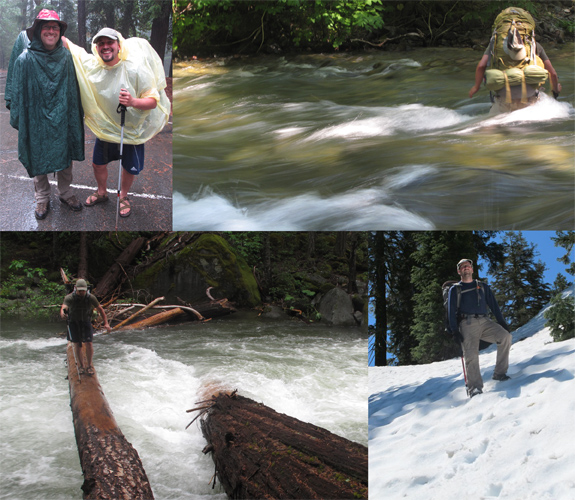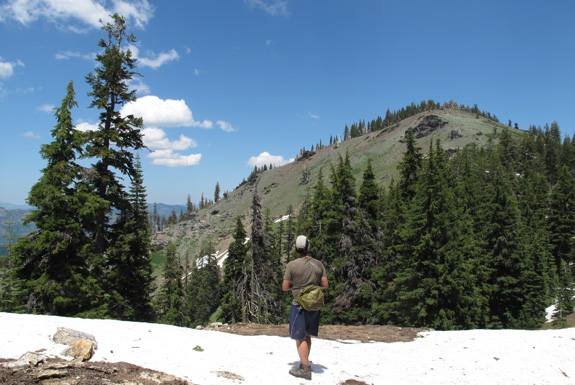Original Publication DATE: 12/16/2011
Miracle Mile
Russian Wilderness, California
Original Publication DATE: 8/31/2011
In the late 1960’s, after arriving at Humboldt State University as a new professor, John O. Sawyer received a letter in the mail from G. Ledyard Stebbins. Stebbins, widely regarded as one of America’s leading evolutionary biologists but also a lover of rare plants, suggested to John that he needed to visit a remote place in the Klamath Mountains known as Blake’s Fork. Here, he said, John might help verify a report for one of California’s rarest conifers–the Engelmann spruce. Stebbins hoped John could record his findings in a new database called the Inventory of Rare and Endangered Vascular Plants of California organized by the California Native Plant Society. With conifers calling, John and his friend and co-worker Dale Thornburgh went on a journey that would change our understanding of conifer distributions, plant associations, and wilderness in California.

Ecological Amplitude: A story of climax
Original Publication DATE: 7/15/2011
Box Camp Mountain | Marble Mountain Wilderness
Ecological amplitude is the range of habitats, often dependent on and defined by elevation, within which a certain species has the ability to survive. In the Klamath Mountains there are two species of pines that define the highest elevations–growing at or near the summits of peaks from ~7500′ to 9000′ (The Klamath Mountains get no higher). Foxtail pine (Pinus balfouriana) and whitebark pine (Pinus albicaulis) inhabit our sky islands where they are the crowning jewels of this coniferous wonderland.
Box Camp Mountain is interesting for several reasons. The first is that its summit is only 7,267′ yet both species of said pines live in this fringe habitat. This is generally on south-facing slopes where lack of competition from firs and hemlocks (which thrive on north-facing slopes) is minimal. When approaching the summit I began to doubt the reports of these pines being here; but in the last few hundred feet they began to appear. Throughout Holocene warming, these two species (and others) have slowly been retreating up regional mountains. Now, after thousands of years, they have reached their ecological climax on Box Camp–there is no more up on which to grow. This mountain holds the most formidably presumptive story I have attempted to read in a high elevation Klamath landscape–and what I read does not appears to have a happy ending.
Continue reading “Ecological Amplitude: A story of climax”Red Buttes Wilderness | Recognizing Wild
Original Publication DATE: 7/13/2011
Our adventure began in the heavy rain of late June. We waved farewell to Allison from the Canyon Creek Trailhead to walk the Bigfoot Trail–in search of wild plants and places–for two weeks. As we climbed into the Trinity Alps it was doubtful we would be able to hike very far because of heavy snow and high water. On our second day, as the rain cleared, we approached the dangerously swift Stuarts Fork and were, for a moment, stopped by Mountains and Water.

Baden Powell – San Gabriel Mountains
Original Publication DATE: 5/29/2011
On the way south I decided to revisit some of my favorite hikes from when I lived in the San Gabriel Mountains and taught outdoor education. The top on the list was the summit of Mount Baden Powell. Because the summit is 9,399 feet, it is within close proximity of the Pacific Ocean (on the rare smog-free day it is visible), and on the edge of the Mojave Desert there is astounding plant diversity meeting and mixing on the flanks of the mountain. Day one of my journey I climbed the peak and day two I dropped into the San Gabriel River valley within the Sheep Mountain Wilderness to enjoy the lower elevations of Baden Powell’s mastiff. Both were amazing hikes–pictures follow.
The Ascent – Mount Baden Powell

